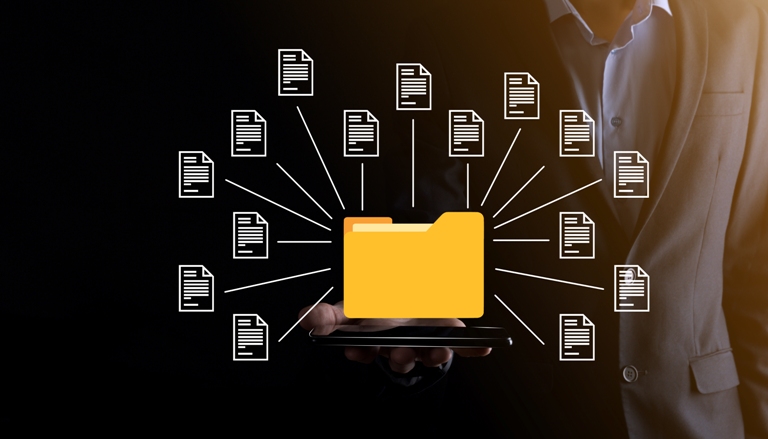Documents are a crucial component of any organisation, whether electronic or paper-based. They arrive in the business in several ways, shapes, and forms from a range of sources. Effective file archiving is indispensable for maintaining organisational efficiency and compliance. With documents ranging from active to inactive, it is essential to have a robust Digital Document Management System to manage and secure them.

How Does a Digital Document Management System Declutter Your Workspace?
1. Storage Space – Reduced
Property costs are high, and renting space to store paper documents is inefficient especially off-site. A DMS saves you valuable time and is a real alternative to the storage rooms, filing cabinets and boxes. What’s more, rooms taken up with storage can be converted back to an additional office space or, if surplus to the requirements, rented out to generate income instead of being an overhead cost.
2. Enhanced Security
Document security is critical in today’s business environment, and sensitive data about your clients and your business must be protected. With a document management system, it is possible to control the document access for different groups or individuals even at a folder level. The software also offers an audit trail of when and by whom all the documents have been accessed all across the board.
It is also possible to tag documents and send automated alerts when they are accessed.
3. Improved Compliance
Compliance legislation can be challenging for many types of documents. Non-compliance can often be a criminal offence, with the high risk of fines, revoked licenses, and, in the worst situations, loss of clientele and also the business itself. GDPR has some stringent security and privacy guidelines. Software-based DMS reduces the risk of non-compliance, with the ability to categorise the documents when storing and invoke the recording retention schedules.
4. Ease of Filing and Retrieval
It will come without any surprise that many hours can be wasted searching for a file saved somewhere in your system. Despite good intentions, systems like a typical Windows filing structure can create multiple locations and file versions, which different people may edit. With DMS, there is one source of the truth – but with the version control built in to recover or view the older versions of that document if necessary. Locating a file can be done through a filename or a part of a filename, by type, or by some of the content, as the files are optically character-read at the time of saving. This decreases the time for retrieval dramatically, and it is possible to deal with the queries instantly rather than searching for paper files and telephone someone back.
With integration into the major common business applications like Word, Excel and Outlook -the DMS permits you to file the documents directly from within these products. Indeed, any document of any type can be saved to the DMS.
5. Improved Collaboration
DMS makes information sharing and collaboration easy. The electronic imaging option makes it extremely easy to share the documents via email or the internet from almost anywhere. DMS permits better workflow monitoring and provides greater insights into business processes and methodologies. External users’ access can also be monitored, restricted, and controlled as necessary.
6. Backup and Disaster Recovery
The ideal scenario is an efficient data backup and disaster recovery plan, which is possible with the document management systems but nigh-on impossible with the paper-based documents. Paper storage files are easily susceptible to natural hazards like fire, flood and earthquake.
7. Regulatory Compliance
Implement a robust deletion policy to ensure adherence to data retention regulations. Maintaining a clear and documented archiving and deletion policy ensures that all the businessess can very quickly demonstrate compliance during audits or inspections. Comprehensive archiving practices simplify audit preparation and help organisations respond to requests for documentation or specific records.
In Conclusion
A document management system allows users, employees and business owners to access the documents remotely from the multiple locations just as long as there is an internet connection. Arrange a free demo with SFT Dox today and find out how a tailored document management solution can also improve your processes, irrespective of the size of your business.










